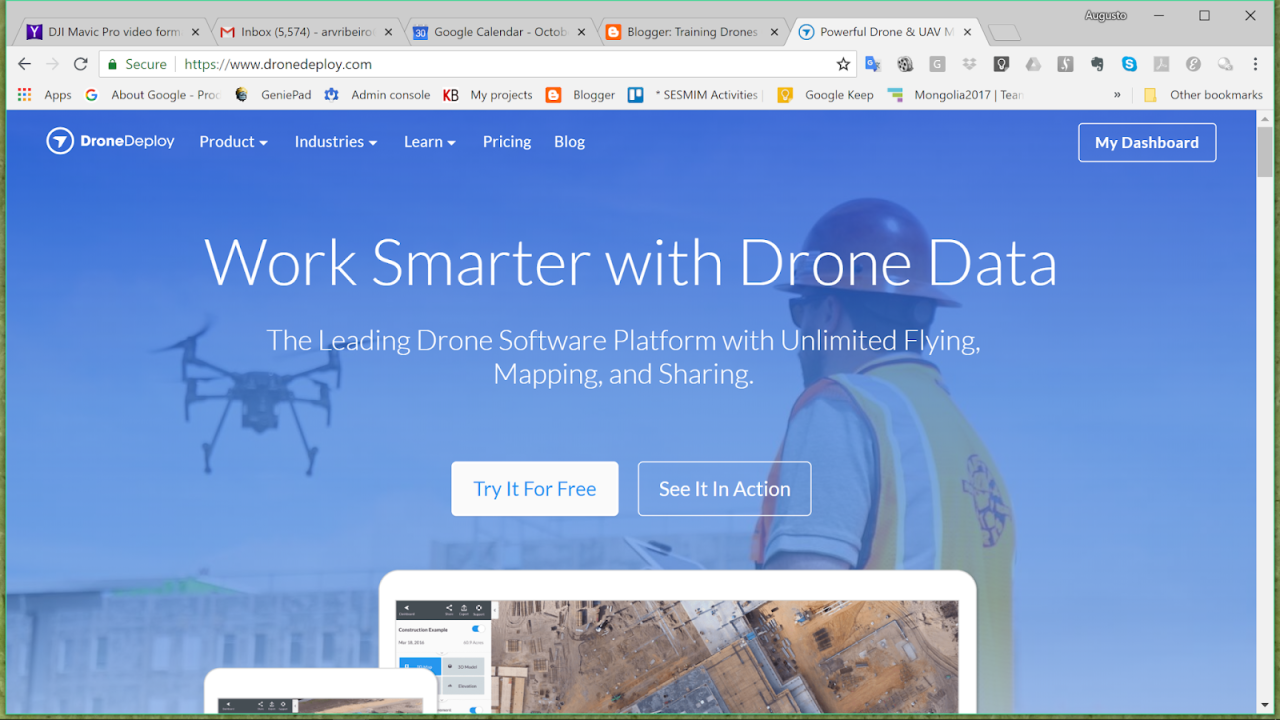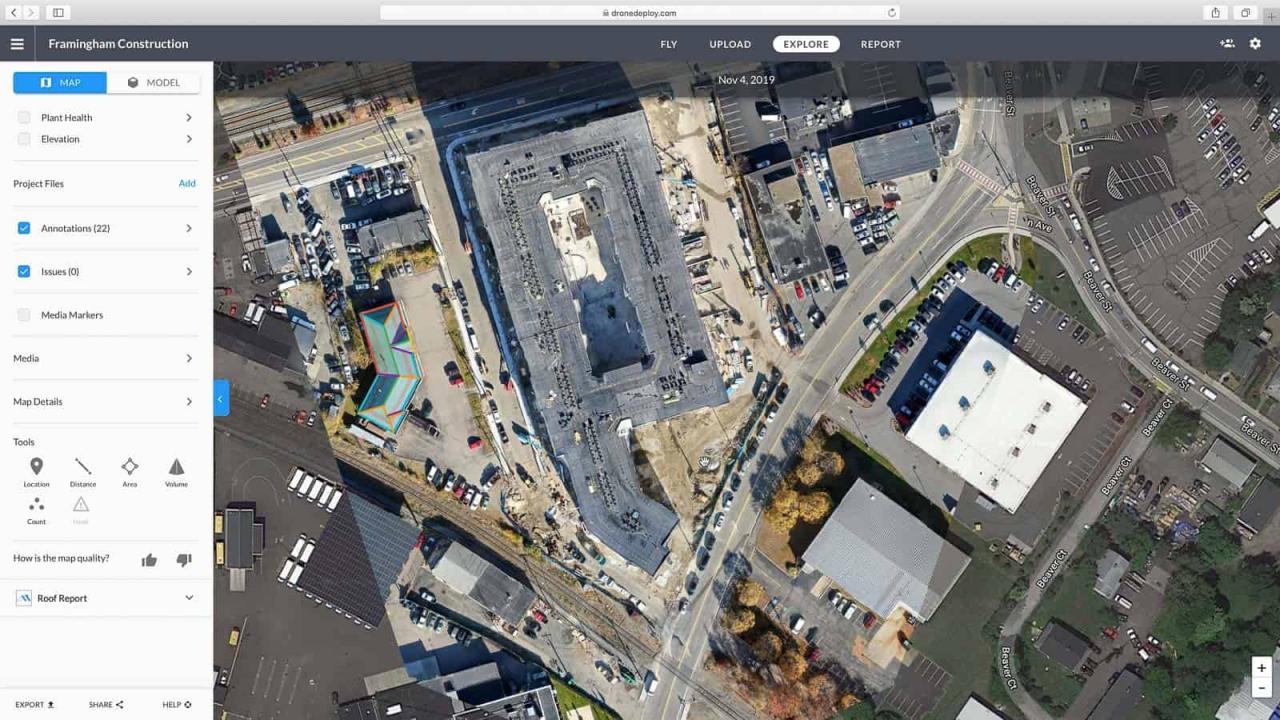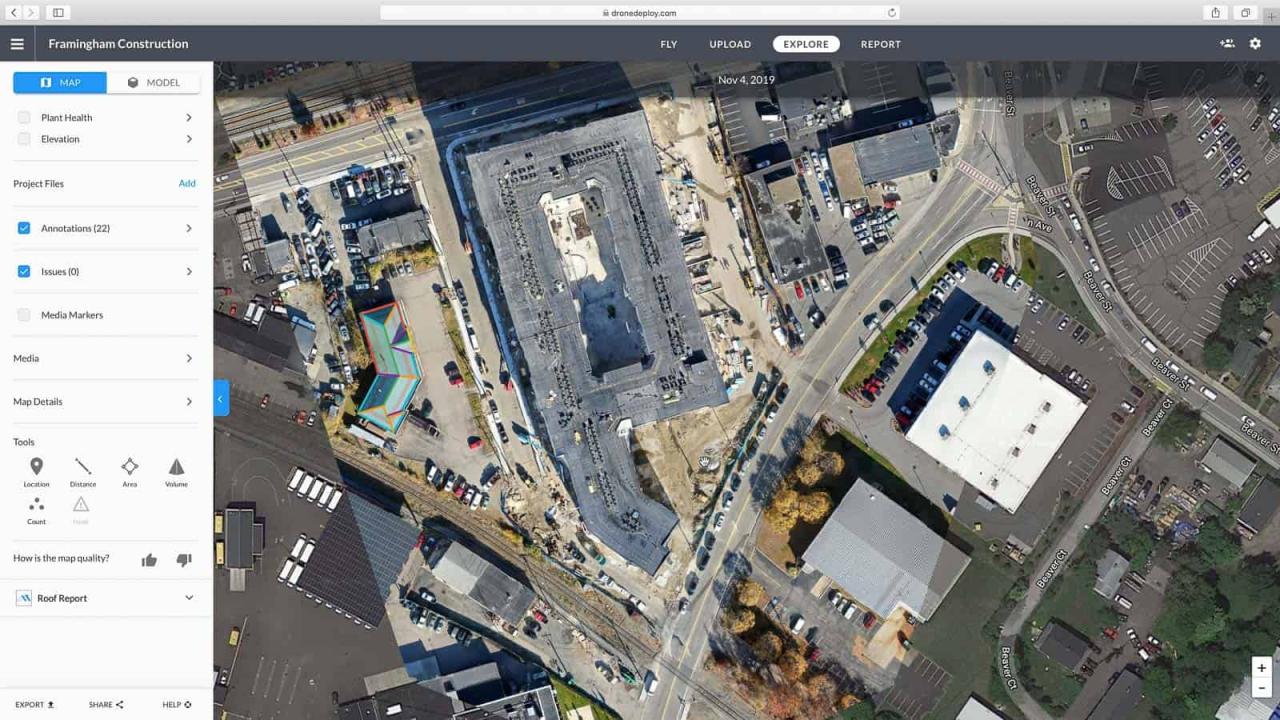How to use drone deploy – How to use DroneDeploy? It’s easier than you think! This guide walks you through everything from setting up your account and planning flights to processing data and sharing your amazing aerial results. We’ll cover connecting your drone, mastering flight planning, troubleshooting common issues, and even exploring advanced features like 3D modeling. Get ready to take your drone operations to the next level!
We’ll break down the process into manageable steps, providing clear instructions and helpful tips along the way. Whether you’re a beginner or already familiar with drone technology, this guide will equip you with the knowledge to confidently utilize DroneDeploy’s powerful capabilities for your projects. From capturing stunning imagery to generating insightful data analysis, you’ll learn how to harness the full potential of this versatile platform.
Getting Started with DroneDeploy
This section guides you through the initial steps of using DroneDeploy, from account creation to connecting your drone and importing existing flight data. Proper setup is crucial for a smooth workflow.
Creating and Verifying a DroneDeploy Account

Creating a DroneDeploy account is straightforward. Visit the DroneDeploy website, click “Sign Up,” and follow the on-screen prompts. You’ll need to provide an email address and create a password. Account verification usually involves clicking a link sent to your registered email address.
Connecting Your Drone to the DroneDeploy App
DroneDeploy supports a wide range of drones. After logging in, the app will guide you through connecting your specific drone model. This typically involves enabling Bluetooth or Wi-Fi connectivity between your drone and your mobile device or computer. Refer to your drone’s manual and the DroneDeploy app’s in-app instructions for detailed steps.
Getting started with DroneDeploy is easier than you think! First, you’ll need to create an account and familiarize yourself with the interface. Then, check out this super helpful guide on how to use DroneDeploy to learn about flight planning and data processing. Once you’ve grasped the basics, you’ll be creating stunning aerial maps and models in no time.
Mastering how to use DroneDeploy opens up a world of possibilities!
Importing Existing Flight Data
DroneDeploy allows you to import data from previous flights. The process typically involves selecting the “Import Data” option within the app. You’ll then be prompted to choose the data files (images, flight logs) from your device’s storage. DroneDeploy will automatically process this data, creating a map based on the imported information. Ensure the data is compatible with DroneDeploy’s format.
Setting Up Your Profile and Preferences
Personalize your DroneDeploy experience by adjusting your profile settings and preferences. This includes setting your units of measurement (metric or imperial), notification preferences, and potentially integrating with other services. A well-configured profile streamlines your workflow and ensures consistency across projects.
Planning Your Drone Flights: How To Use Drone Deploy

Effective flight planning is key to successful drone operations. This section details how to create flight plans in DroneDeploy and select appropriate flight parameters.
Designing a Flight Plan
DroneDeploy offers intuitive mapping tools to design flight plans. You define a polygon around your area of interest (e.g., a construction site). The software then automatically generates a flight path optimized for image overlap and efficient coverage. You can adjust parameters like altitude, speed, and image overlap to meet your project’s needs.
| Parameter | Setting (Example) | Rationale | Impact |
|---|---|---|---|
| Altitude | 100 feet | Sufficient height for desired ground sample distance (GSD) | Affects image resolution and ground coverage |
| Speed | 5 m/s | Balance between speed and image quality | Impacts flight time and data acquisition rate |
| Overlap (Forward/Side) | 80%/60% | Ensures sufficient image overlap for accurate stitching | Critical for orthomosaic creation and 3D modeling |
Selecting Appropriate Flight Parameters
Flight parameters directly influence data quality. Higher altitude reduces ground sample distance (GSD), resulting in higher resolution but covering less area. Faster speeds reduce flight time but may compromise image quality. The optimal settings depend on the project’s specific requirements for resolution, area coverage, and acceptable flight time.
Pre-Flight Inspection Checklist, How to use drone deploy
- Check battery levels
- Inspect drone for any damage
- Verify GPS signal strength
- Confirm flight plan accuracy
- Check weather conditions
- Obtain necessary permissions (if required)
Flight Planning Strategies for Different Terrain Types
Flat terrain allows for simpler flight plans with consistent altitude. Hilly terrain requires more complex plans, potentially using variable altitude settings to maintain consistent GSD. DroneDeploy’s advanced features can handle varying terrain, adapting the flight path accordingly.
Executing Drone Flights
This section covers uploading flight plans, initiating automated flights, troubleshooting common issues, and ensuring safe drone operations.
Uploading and Initiating Flights
Once your flight plan is designed, upload it to your drone via the DroneDeploy app. The app will guide you through the process, typically involving connecting to your drone’s Wi-Fi and transferring the flight plan data. Initiate the automated flight using the app’s controls, ensuring a clear and safe takeoff area.
Common Flight Issues and Solutions
Common issues include low battery warnings, GPS signal loss, and unexpected wind conditions. Solutions vary depending on the issue. Low battery requires landing and battery replacement. GPS loss may necessitate restarting the drone or finding a location with a stronger signal. Strong winds might necessitate postponing the flight.
Safety Hazards and Mitigation
Potential hazards include collisions with obstacles, loss of control, and falling drones. Mitigation strategies involve careful flight planning, selecting appropriate flight areas, and adhering to all relevant regulations and safety guidelines. Always maintain visual line of sight with your drone.
Troubleshooting Connectivity Problems
- Check drone and device Wi-Fi connections.
- Restart both your drone and your mobile device/computer.
- Ensure you are within the optimal range of your drone’s Wi-Fi signal.
- Verify that no other devices are interfering with the connection.
- Check for software updates for both the DroneDeploy app and your drone’s firmware.
Processing and Analyzing Drone Data
This section details how to process drone imagery in DroneDeploy, generate various data outputs, and manage large datasets.
Processing Drone Imagery
After the flight, upload the captured images to DroneDeploy. The platform automatically processes the imagery, stitching together individual images to create an orthomosaic (a georeferenced, orthorectified image). This process involves sophisticated algorithms to correct for geometric distortions and create a seamless map.
Processing Options and Data Quality
DroneDeploy offers various processing options, including different levels of detail and processing speed. Higher-quality processing takes longer but yields more accurate and detailed results. Choosing the appropriate option depends on your project’s requirements and the available processing time.
Generating Data Outputs
Processed imagery can be used to generate various outputs, including 3D models, elevation maps, volumetric calculations, and precise measurements. These outputs are valuable for various applications, such as construction progress tracking, agricultural yield estimations, and mining site analysis.
Managing Large Datasets
DroneDeploy offers tools for managing and organizing large datasets. These include project organization, data filtering, and efficient data storage. Proper dataset management is crucial for efficient analysis and collaboration.
Sharing and Collaborating on Projects
DroneDeploy facilitates collaboration by allowing you to share processed data and project insights with others.
Sharing Data and Insights
Share your processed data and project insights with collaborators by inviting them to your project. You can control their access level, granting them view-only access or allowing them to edit the project.
Project Sharing Permission Levels
DroneDeploy offers different permission levels for project sharing, ranging from “Viewer” (can only view data) to “Editor” (can edit and modify the project) and “Owner” (full control). Assigning appropriate permissions ensures data security and controls the level of collaboration.
Workflow for Multi-User Collaboration
A typical workflow involves assigning roles and responsibilities to each collaborator. The project owner might be responsible for flight planning and data processing, while other collaborators might focus on data analysis and reporting. Clear communication and defined roles streamline the collaborative process.
Exporting Data
DroneDeploy allows you to export data in various formats, including PDF reports, shapefiles, and other commonly used geospatial data formats. This facilitates integration with other software and platforms.
Advanced DroneDeploy Features
DroneDeploy offers advanced features that enhance data analysis and project management.
Getting started with DroneDeploy is easier than you think! First, you’ll want to set up your account and connect your drone. Then, you’ll plan your flight path, making sure to cover the area you need. Check out this awesome guide on how to use DroneDeploy for detailed instructions and troubleshooting tips. Once you’ve flown and captured your data, DroneDeploy will process it to create stunning maps and 3D models.
Mastering DroneDeploy opens up a world of possibilities!
Utilizing Advanced Features

Advanced features include 3D modeling, volumetric calculations, and progress tracking tools. These tools provide valuable insights for various applications, enabling precise measurements, volume estimations, and monitoring of project progress over time.
Creating a 3D Model
Creating a 3D model involves processing high-resolution imagery and using DroneDeploy’s 3D modeling tools. The process involves selecting the appropriate processing options, ensuring sufficient image overlap, and potentially using point cloud data for higher accuracy. The resulting 3D model can be used for various applications, such as site analysis, construction progress monitoring, and volume calculations.
DroneDeploy Applications Across Industries
DroneDeploy finds applications across various industries, including agriculture (crop monitoring, yield estimation), construction (site surveying, progress tracking), mining (site monitoring, volume calculations), and insurance (damage assessment).
Benefits and Limitations
DroneDeploy offers benefits such as efficient data processing, ease of use, and collaborative features. However, limitations might include the cost of the platform, the need for reliable internet connectivity, and potential limitations in processing very large datasets or complex terrains.
Visualizing Drone Data
Effective data visualization is crucial for communicating insights from drone data. This section covers creating compelling visual representations using DroneDeploy’s tools.
Creating Compelling Visual Representations
DroneDeploy offers tools for creating maps, 3D models, and other visual representations. Effective visualizations use clear labels, consistent color schemes, and appropriate scales to convey information accurately and efficiently. Examples include orthomosaics with overlaid annotations, 3D models with measurements, and interactive maps showing changes over time.
Best Practices for Creating Reports
Best practices include using clear and concise language, presenting data in a logical order, and including relevant context. Reports should highlight key findings and actionable insights. Including visuals, such as maps and charts, enhances understanding and communication.
Creating Presentations
Presentations should begin with a clear overview of the project, followed by key findings supported by visual representations. Include a concise summary and recommendations. The key information to include depends on the audience and the project’s goals. Use high-quality visuals and keep the presentation concise and engaging.
Mastering DroneDeploy unlocks a world of possibilities for efficient data acquisition and analysis. By following the steps Artikeld in this guide, you’ve gained the skills to plan and execute successful drone flights, process your data effectively, and share your findings with ease. Remember to always prioritize safety and familiarize yourself with local regulations. Now go out there and capture some amazing aerial perspectives!
FAQ Section
What types of drones are compatible with DroneDeploy?
DroneDeploy supports a wide range of drones from various manufacturers. Check their website for the most up-to-date compatibility list.
How much does DroneDeploy cost?
DroneDeploy offers various subscription plans catering to different needs and budgets. Visit their pricing page for details.
Can I use DroneDeploy offline?
While some features require an internet connection, certain aspects like flight planning can be done offline, depending on your plan and device capabilities.
What file formats can I export from DroneDeploy?
DroneDeploy allows exporting in various formats including orthomosaics (TIFF, GeoTIFF), 3D models (OBJ, LAS), and reports (PDF).
